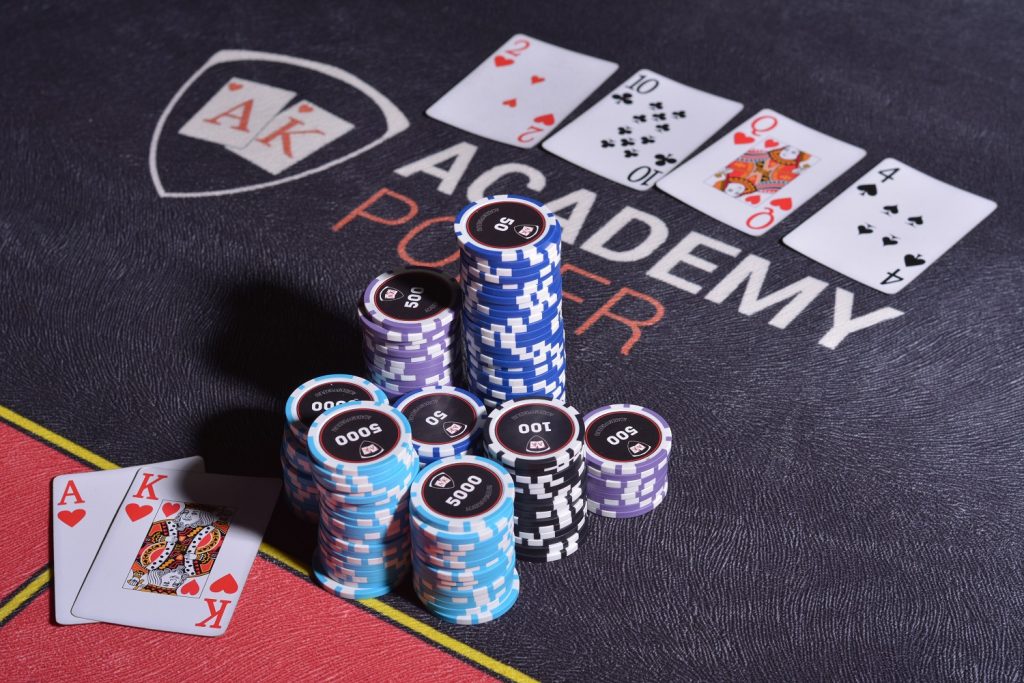Limit and no-limit types of games are very popular today, and this applies not only to Hold’em. So how does the first option differ from the second?
The different types of poker are linked by the type of stakes. The game can be played on a limit or no limit basis. In other words, in limit games, there are certain bets, and a player cannot bet as much as he or she wants. The second type of game does not impose similar restrictions on the bet. However, the above types differ not only in terms of betting limits – each limit game has a different playing strategy.
Starting Hands

Among the first and most significant differences are the starting hands. With limit play you can go all in with A 6, but in no limit play you better get rid of those cards.
No Limit Hold’em has a higher risk of play than Limit Hold’em. The bets have a fixed limit, so you can easily calculate your own costs ahead of time to watch the turn, flop, and river. In other words, there are more hands to play in limit hold’em than in no limit hold’em.
Bluffing
- No limit hold’em draws you in with a frantic pace of play, where the risk and bluffing are at a premium.
- Challenging decisions follow one after another like a snow avalanche.
- One wrong move can knock you out of the game or leave you with nothing in the cash game.
In this respect, limit games are like the smoothness of a lake in calm weather. You have minimal risk, and with the fact that the stakes are limited, the whole game is calm and without nerves.
If you’ve had time to master the poker math, you’ll have no trouble figuring out limit hold’em. It is based on mathematical calculations made when making decisions. Your result will depend on how accurately you calculate everything.
At the same time, you shouldn’t discount the fact that there is always a bluff in poker, which either breaks in or not. But in the limit game, bluffing loses its original meaning, because it passes very rarely. That’s because the stakes have a limit that doesn’t scare opponents.
No Limit Hold’em combined with bluffs make a perfect pair. In no limit poker, the ability to bluff, whether it’s a tournament game or a cash game, is the key to success. In such a game, bluffing is the main source of getting your opponents’ money and chips.
Position
As you know, position is one of the most important aspects to consider in no limit games. Position allows you to pick up pots without having a good card. At the same time, in limit games, position also loses its meaning because the stakes are limited.
- No-limit hold’em allows you to have a creative game where you can show off all of your skills and abilities without obstacles. It’s an opportunity to play out mind-blowing lines that will drive your opponents crazy.
- Limit betting is a shackle you put on your own skills and talents and force yourself to play only the card. You can’t show off your own talent, the limited stakes simply won’t let you.
Even if you have a big stack, you can’t impress or intimidate your opponent with it, as you do in no-limit games when the player goes all-in. With limit games, this is not possible.
Reading Hands

The game of poker can be thought of as a game of incomplete information, in which, in order to beat your opponent, read his hand or discard your own cards as having no power.
In a no-limit game, this is done without any problems after analyzing the line of play as well as the size of your opponent’s bets. In limit play, it’s much harder to put your opponent in certain hands. Regardless of what he’s holding, a pair of twos or aces, the bet will still be the same.
Downswing
In no-limit hold’em, downswing, or a losing streak, has a very serious effect on a player’s bankroll. Playing no limit hold’em cash games can result in hundreds of thousands of dollars, and if a player is downswing, they’ll be broke very quickly, which is not the case in limit limit games. Large banks are virtually never played here. Even with $2,000/$4,000 limits it’s quite possible to calculate what the maximum pot size of two players could be. Due to this, in limit hold’em, the losing streak would have less impact on the player’s bankroll.
Bankroll Management
For those who are new to the game, it is recommended to start with limit hold’em games, just to avoid momentarily losing your existing bankroll. When playing cash games at limit bets, the bankroll is counted in the number of big blinds.
For example, if your bankroll is $100 and you decide to play $0.25/$0.50 limit, you would have 200bb. This game would not be correct. In limit play, the minimum size of your bankroll should be 300bb. In other words, if you have $100 in your account, you should play with limits that are 2-3 times smaller, for example $0.05/$0.10. Playing in such a way you will have 1000bb not 200b, which is not bad to start with.
The situation is quite different in no-limit games. Playing at $0.05/$0.10 limit, your minimum bankroll needs to be $250-$300. In no-limit games, you should build a large safety cushion, as there is no telling how long your losing streak could last.
Since the above data is relative, you’ll learn over time to determine the size of your personal safety cushion in a particular game, but the initial stage of cash game better choose limit hold’em.
Aggression
In limit play, aggression, like bluffing, is also irrelevant due to limited stakes. While you can take the pot 75%-90% of the time in no limit poker thanks to aggression, the opposite is true in limit games. Your draw percentage would be 10-30%, which is not a significant amount for a productive and profitable play, especially considering the high probability of bluffing.
As a result, we can draw the following conclusions. If you are a type of player who prefers a calm and calculated game where everything is done by mathematics, then limit poker is your absolute choice.
If you’re a creative gamer who likes to get creative with every hand and who prefers risk and extremes, then you must choose no-limit poker.


